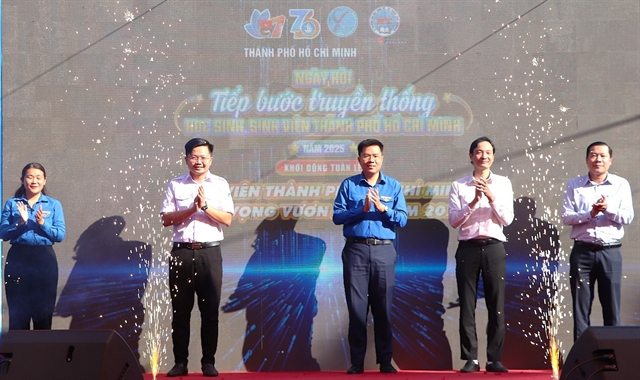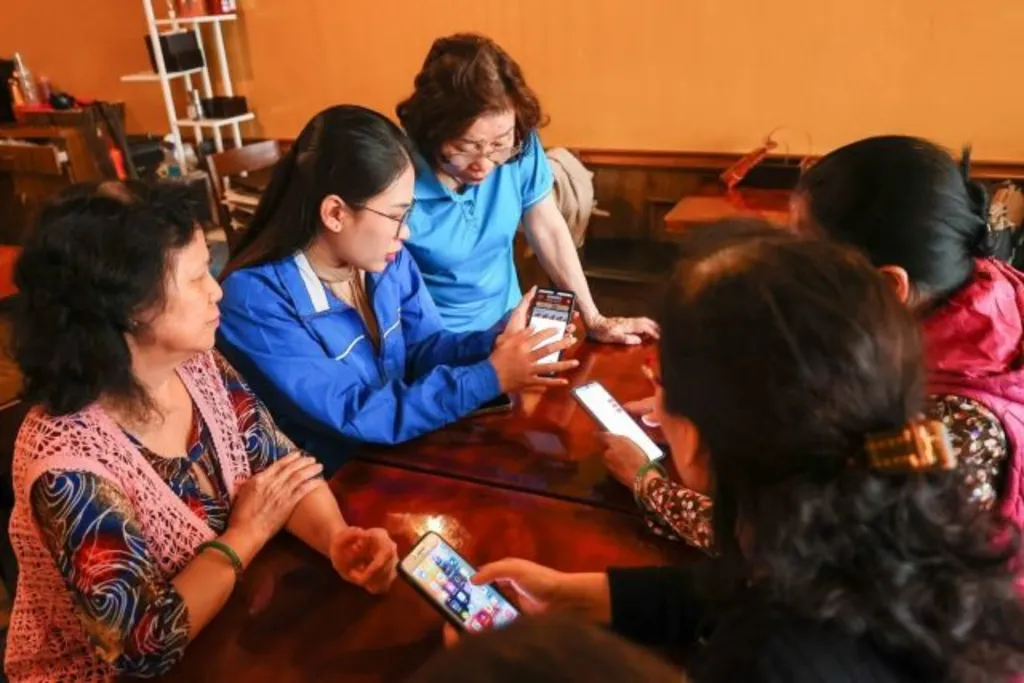 Opinion
Opinion

 |
| A volunteer guides several elderly residents in Hà Nội on using smart devices and navigating online public services. — VNA/VNS Photo |
HÀ NỘI — Party General Secretary Tô Lâm has launched a national campaign known as 'Bình dân học vụ số', or 'Digital Literacy for All', framing digital literacy as a requirement for modern citizenship, much like reading and writing were in the 20th century.
Inspired by the legendary 1945 literacy movement 'Bình dân học vụ' that taught millions of Vietnamese to read and write after independence, this modern version aims to teach digital skills to everyone, from rural farmers to urban pensioners, ensuring no one is left behind in the country's rapid digital transformation.
What does the campaign involve?
The campaign is built around three major pillars:
- A national platform: A Government-run e-learning portal (binhdanhocvuso.gov.vn) developed by the Ministry of Public Security and Hanoi University of Science and Technology providing over 3,000 free courses on digital skills — from using smartphones and online public services to online safety and e-commerce. It can host 400,000 users simultaneously and includes AI-powered assessments.
- Community-based training teams: local 'Digital Literacy Brigades' of tech-savvy youth, volunteers and civil servants have been deployed across the country. They offer hands-on guidance to help people obtain basic digital literacy, navigate Government e-services and engage in the digital economy, such as opening an online shop for local produce.
- Integration with the national digitalisation strategy: the campaign forms part of Việt Nam’s 2021–2030 national digital transformation and lifelong learning strategies. It complements the 'Digital Community Technology Teams' initiative launched in 2022, which aims to enhance community digital skills and eliminate digital illiteracy. More than 93,000 such teams are operating nationwide, with over 450,000 members.
Why now?
The campaign is deeply intertwined with Việt Nam's broader national goals specified in high-level directives, including the Communist Party's Resolution 57, which prioritises advancements in science and technology, innovation and national digital transformation.
The underlying drivers are clear: bridging the digital gap between urban and rural areas, boosting the digital economy (targeting one-fifth of GDP by the end of the year), improving national competitiveness and building the foundations for a comprehensive digital government, society and citizenship.
The emphasis is on inclusivity, preventing citizens, particularly vulnerable groups, from being marginalised by technology.
"Just as we once eradicated illiteracy with nationwide efforts, we now need a mass movement to ensure every citizen understands and benefits from digital technology," said Prime Minister Chính at the platform’s launch in March.
Citing the emergence of new technologies like China's Deepseek, Chairman of Vietnamese tech giant FPT Trương Gia Bình said: "Now the opportunity has come. DeepSeek enables us to popularise AI; even small and medium-sized companies can adopt it."
What has it achieved so far?
The campaign has trained over 200,000 people in a pilot rollout. The platform went live in March and saw rapid uptake, particularly in provinces with active youth volunteer networks.
For example, reports in Thái Bình Province show progress in getting citizens to use online services and digital payments. In Quỳnh Hồng Commune, about one third of residents were reported as proficient in using online public services, whereas in Vũ Đông Commune, the number reached 50 per cent.
What are the hurdles?
Some challenges stand in the way:
- Infrastructure gaps: uneven internet connectivity, lack of affordable devices and coverage dead zones persist, especially in rural and mountainous regions. Some areas lack basic facilities for in-person training. According to a UNDP report, Việt Nam has one of Southeast Asia's fastest-growing internet user bases, but rural penetration still lagged behind urban centres by 9 per cent in 2023.
- User barriers: many potential learners, particularly older individuals, face psychological barriers, finding technology intimidating or irrelevant. Acquiring and retaining new digital skills can be difficult. Maintaining participation is also a struggle.
- Resources: sustaining the initiative requires significant and ongoing funding for infrastructure, platform maintenance and training resources.
Việt Nam’s 'Digital Literacy for All' campaign is not just a tech initiative; it is a political statement, declaring that digital skills are the new literacy, essential for social inclusion, national competitiveness and individual empowerment.
Whether this State-led, mass-mobilised push for digital equity can foster genuine, widespread digital empowerment across Việt Nam's diverse society remains a critical question for the years to come. — VNS